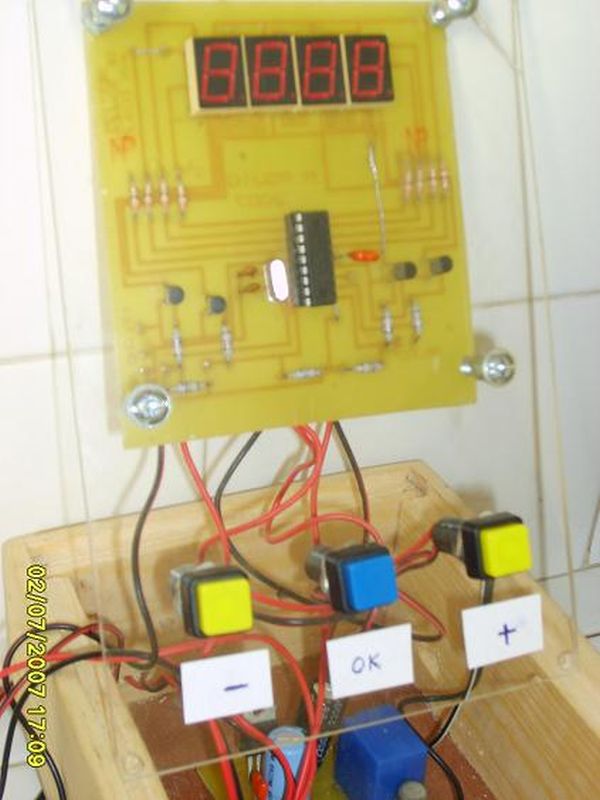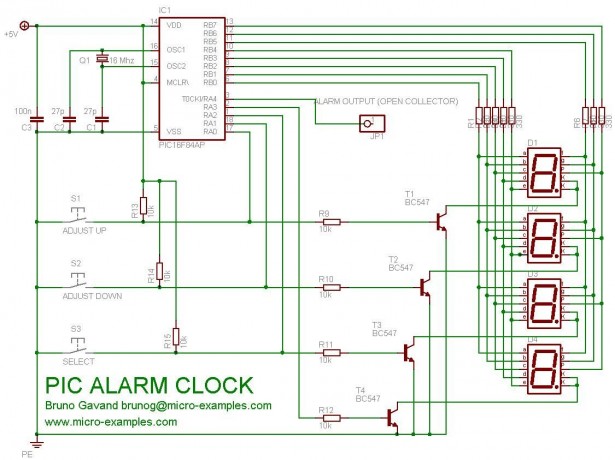Summary of A PIC16F84A Alarm Clock
This project presents a simple weekly alarm clock using a PIC16F84A microcontroller. It keeps track of seconds, minutes, hours, and days of the week, displaying time on four seven-segment LED displays. Time settings and alarms (day, hour, minute, duration) are adjustable with three buttons. The alarm output is on the PIC's RA4 pin and indicated on the display's decimal point. The program is written in BASIC (mikroBasic), suitable for beginners. The design supports either common cathode or common anode LED displays, and the number of alarms depends on ROM space.
Parts used in the PIC16F84A Alarm Clock:
- PIC16F84A Microcontroller
- 4 Seven-segment LED displays (common cathode or common anode)
- 3 push buttons (Up, Down, Enter)
- RA4 open collector output for alarm signaling
- Supporting passive components (resistors, capacitors as needed)
- Power supply (not explicitly mentioned but required)
Here is a simple PIC16F84A alarm clock. This page summarizes this discussion (in french) in my forum, where Samir (aka numerique1) requested for help to build a weekly alarm clock for his school. Many thanks to him for his tests and patience.
This clock counts seconds, minutes, hours and day of the week.
Time is displayed on 4 seven segment LED displays, and is adjustable with three buttons at start time (up, down, enter).
You can program the day of the week, hour, minute and duration of the alarms.
The number of alarms are limited by ROM space only.
The alarm is on the RA4 open collector output of the PIC, and is repeated on a decimal point of the display.
For once, the program is in BASIC (mikroBasic) and I hope it will make a good start for beginners.
First, the BASIC source code.
Note that you can build it either for common cathod or common anode LED display.
For more detail: A PIC16F84A Alarm Clock


